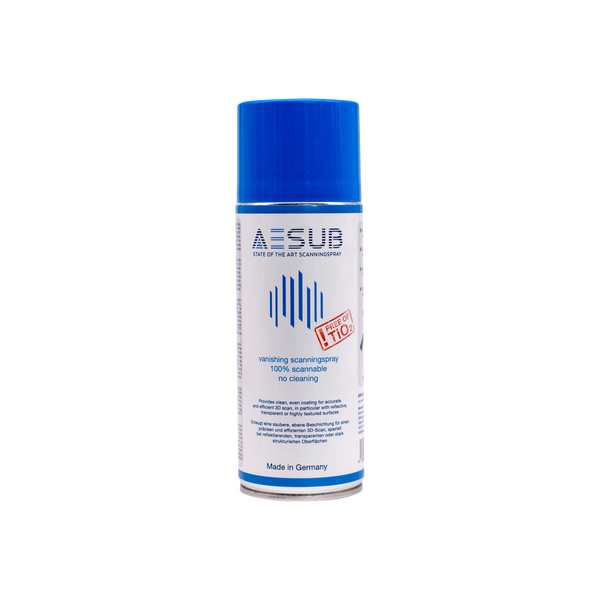La convergence de la technologie et de l'art a toujours été un carrefour fascinant. Dans le domaine des beaux-arts, la numérisation 3D s'est imposée comme un outil révolutionnaire, permettant aux artistes, conservateurs et historiens de préserver, restaurer et créer des œuvres d'art avec une précision et une créativité sans précédent. Deux des scanners 3D les plus performants pour imprimantes 3D dans ce domaine sont : Lynx et Élan de 3DMakerpro. Chacun apporte ses atouts et ses capacités, ce qui les rend précieux dans le monde des beaux-arts.
Préservation et restauration
L'une des applications les plus importantes de la numérisation 3D dans les beaux-arts est la préservation et la restauration d'œuvres d'art de valeur. Les méthodes traditionnelles de restauration nécessitent souvent un contact physique avec des objets fragiles, ce qui peut parfois les endommager davantage. La numérisation 3D permet une approche non invasive.

Lynx
Avec sa précision remarquable allant jusqu'à 0, 10 mm et une plage de numérisation capable de capturer des objets jusqu'à 5000 x 5000 x 5000 mm, Lynx est particulièrement adapté à cette tâche. Sa large plage de capture unique de 250 × 400 mm, soit 200 % plus grande que celle des scanners moyen format traditionnels, permet de numériser avec précision et précision même les plus grandes sculptures et œuvres d'art. Cette précision aide les restaurateurs à documenter l'état exact d'un objet avant restauration, leur permettant ainsi d'élaborer un plan de restauration rigoureux et éclairé.
Élan
Le scanner 3D Moose excelle grâce à son suivi visuel par IA et à son algorithme innovant de nuage de points, atteignant une précision exceptionnelle de 0, 03 mm. Sa technologie de lumière bleue améliore encore cette précision, le rendant idéal pour numériser les détails les plus fins des petits objets. L'orignal capacité de numérisation allant de 15 mm à 1 500 mm permettant une exploration détaillée de structures complexes, garantissant que chaque détail infime est capturé et préservé.
Archivage numérique
L'archivage numérique est un autre domaine où la numérisation 3D a démontré un potentiel considérable. La création de répliques numériques d'œuvres d'art permet non seulement de les préserver pour les générations futures, mais aussi de les rendre accessibles à un public mondial. Les musées et galeries peuvent partager leurs collections en ligne, proposant des visites virtuelles et des expériences interactives jusqu'alors inimaginables.

Lynx
Le logiciel convivial du scanner et ses multiples modes de numérisation, notamment Mode platine, mode portable et mode mobile (avec l'accessoire Connect) , il offre une grande polyvalence pour différents scénarios de numérisation. Sa capacité à numériser en douceur des objets volumineux grâce à un stabilisateur optique et un suivi visuel avancé minimise les risques de désalignement, garantissant ainsi des répliques numériques aussi précises que possible.
Élan
Avec ses nuages de points détaillés et résolution de 0, 07 mmMoose préserve parfaitement les détails des objets, ce qui le rend idéal pour créer des modèles raffinés destinés à l'impression 3D ou à des projets d'exposition. Profondeur de numérisation de 100 mm Améliore considérablement les capacités de numérisation verticale, couvrant intégralement les modèles complexes, même ceux aux structures complexes. Les répliques numériques créées avec Moose sont ainsi extrêmement détaillées et réalistes.
Expression créative et nouvelles formes d'art
Au-delà de la préservation et de l'archivage, la technologie de numérisation 3D ouvre de nouvelles perspectives d'expression créative. Les artistes peuvent utiliser des scanners 3D pour créer des sculptures numériques, modifier des œuvres existantes ou même collaborer à distance sur des projets de grande envergure. La possibilité de manipuler des modèles numériques permet d'expérimenter sans les contraintes des matériaux physiques.
Lynx
Avec son résolution de 0, 30 mm et une capacité de numérisation mobile en option, Lynx Idéal pour les artistes travaillant sur des objets de moyenne et grande taille, il leur permet de capturer des modèles complets et détaillés en quelques minutes, mettant en valeur chaque détail et offrant un haut niveau de reproduction d'objets, adapté à l'art, au design et à l'industrie.
Élan
De même, le Élan Le format moyen phare du scanner, associé à un suivi et une précision avancés, offre aux artistes des numérisations détaillées, facilement modifiables ou améliorées numériquement. Cette flexibilité est précieuse pour les artistes qui explorent de nouvelles techniques et de nouveaux supports, repoussant ainsi les limites des formes d'art traditionnelles.
Conclusion
En conclusion, la technologie de numérisation 3D a révolutionné le monde des beaux-arts, offrant de nouveaux outils pour la préservation, la restauration, l'archivage numérique et l'expression créative. Les scanners Lynx et Moose de 3DMakerpro Ils constituent des instruments puissants dans cette transformation. Leurs atouts et leurs capacités uniques les rendent indispensables aux artistes, aux conservateurs et aux conservateurs, garantissant que l'art est non seulement préservé, mais aussi réimaginé pour l'avenir. Avec l'évolution constante de la technologie de numérisation 3D, les possibilités offertes aux beaux-arts sont infinies, promettant un avenir où art et technologie s'entremêlent harmonieusement.



















